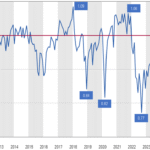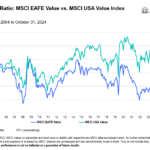1. America’s Deepening Housing Shortage
The U.S. faces a structural housing shortage of approximately 4–7 million units, pushing rents up by nearly 30% since 2017 In 2024–2025, homeownership became untenable for many:
- Median-income households in U.S. coastal metros now spend 44–105% of their income to afford a median-priced home—making ownership essentially impossible in many areas
- First-time homebuyer activity dropped sharply: only ~1.1 million bought homes in 2024, nearly half the historical average, particularly in sub‑$500 K markets, mostly lower-income buyers
As a result, rental demand has surged, vacancy rates have declined, and 42–46 million U.S. households now rent—many comprising “trapped renters” unable to transition to homeownership
2. Why REITs Thrive in This Environment
A. REITs Bridge Capital & Community
REITs—created in the U.S. in 1960—are companies that own and operate income-producing real estate, distributing at least 90% of taxable income to shareholders in dividends to maintain tax-advantaged status They provide investors with liquid access to housing-related assets without needing large capital outlays.
B. Attractive Income, Diversification & Inflation Protection
REITs generally offer dividend yields of 3% or more, are less correlated with stocks and bonds, and benefit from rent escalator clauses that align payouts with inflation trends
C. Rising Underlying Demand & Absorption
In early 2025, newly leased apartment units hit their highest Q1 ever: 138,000 units absorbed, totaling nearly 708,000 units absorbed in 2024–25, matching early 2022 peaks—even as new deliveries slightly lag behind Occupancy rose to 95.2%, and average rent increased by 1.1% annually, signaling strong demand
Meanwhile, supply in key markets is slowing. Some Sunbelt metros have finally shifted from oversupply to positive net absorption, particularly Dallas, Atlanta, Denver, and even Austin—and pipelines are tapering toward mid‑2025
3. REIT Types Positioned to Benefit
Multifamily Residential REITs
- AvalonBay Communities (AVB) focuses on upscale coastal and tech-adjacent metro areas. It maintains 95–97% occupancy, consistent rent growth (~3% in 2025), and very limited new supply in its core markets, making it a stable choice in strong-demand zones
- UDR, Inc. and Mid-America Apartment Communities (MAA) lead in Sunbelt markets and are ramping up developments while demand outpaces deliveries. Their active pipelines position them ahead of slowing competition
Other Specialized & Affordable Housing REITs
- UMH Properties and Equity LifeStyle operate in manufactured home communities—one of the most affordable housing segments experiencing sustained demand amid affordability pressure
- Affordable housing REITs, including those partnering via public–private funding, are increasingly attractive to impact investors. Modular construction and sustainability trends help these REITs deliver both social and financial returns
4. Policy & Demographic Tailwinds
A. Government Support & Zoning Reform
- Federal affordable housing initiatives, including ~$5.5 billion in grants, are enhancing development capacity for low- and mid-income projects—often spearheaded by REITs collaborating with nonprofits
- In California, recent legislation easing CEQA environmental review speeds up residential construction projects. REITs with local exposure—such as Essex, AvalonBay, and Equity Residential—stand to benefit, though meaningful effects won’t appear until 2028–29
Efforts to relax exclusionary zoning via the YIMBY movement are also gaining ground in major metro areas, potentially unlocking more housing supply over time—but not at a pace to eliminate current shortages
B. Generational & Household Trends
Young adults (25–34) are delaying homeownership due to affordability, and the median age of first-time buyers has risen to 36, increasing the share of long-term renters Simultaneously, the “lock-in effect”—where existing homeowners with low fixed mortgage rates are reluctant to sell—limits resale inventory and reinforces supply imbalances
5. REIT Financial & Market Dynamics
A. NAV Discounts & Borrowing Power
As of February 2025, U.S. multifamily REITs traded at a median discount of ~11.9% to Net Asset Value (NAV), implying potential upside if valuation gaps narrow Manufactured home REITs traded at even smaller discounts (~9–13%) .
Interest rate conditions are critical: with the prospect of rate cuts ahead, REITs can refinance debt more cheaply, increase leverage, expand property holdings, and boost dividends as margins widen .
B. Operational Resilience and Tech Adoption
Major REITs report ultra-low tenant turnover—even Equity Residential saw just 7.9% in Q1 2025, indicating renters are staying put amid uncertainty Firms are also adopting digital and AI-enabled amenities like self-tour tech and smart-home systems to reduce costs and increase tenant satisfaction and retention
6. Risks & Considerations
A. Economic Weakness or Recession
A slowdown in hiring, wage growth, or GDP—particularly at the state or metro level—could pressure occupancy and rents. Deloitte and J.P. Morgan suggest recession probabilities remain elevated (~60%), which could dampen rental demand
B. Development Overreach or Tariffs
Although many REITs control debt well, major construction pipelines risk overbuilding in Sunbelt markets. Rising tariffs on materials like steel could compress development economics and curb margins
C. Regulatory Shifts & Tenant Protections
Aggressive institutional investment in build-to-rent (e.g. Blackstone, AvalonBay) is drawing regulatory scrutiny over rental pricing and eviction practices. Policy changes aimed at protecting tenants could weigh on long-term yield assumptions
7. How Investors Could Position Themselves
Diversification Within Residential REITs
- Anchor with coastal multifamily leaders like AvalonBay, Equity Residential, and Essex—for stable income and limited new supply exposure.
- Add Sunbelt-focused REITs such as MAA, UDR, and Camden to benefit from booming demand and constrained pipelines.
- Consider manufactured-housing REITs like Equity LifeStyle and UMH for lower-cost rental exposure, especially amid affordability tailwinds.
Target Affordable Housing & Impact Themes
- REITs engaged in public–private partnerships or affordable housing mandates offer not only yield but alignment with social impact investing goals
Monitor Macro & Policy Indicators
Track key indicators such as housing starts, occupancy rates, rent growth, and REITs’ FFO (funds from operations). Watch legislation impacting zoning, evictions, and tenant protections—particularly in high-demand states and metros.
8. Conclusion: In a Housing Crunch, REITs Stand Tall
Yes—REITs look like a smart bet in the face of America’s deep housing crisis. Structural gaps in affordability and supply, demographic shifts toward renting, and rising institutional momentum have created long-term tailwinds for multifamily and affordable housing REITs. With absorption outpacing supply in key markets, occupancy near record norms, and rent growth rebounding, the fundamentals appear supportive. Strong liquidity, disciplined development, and potential for policy support further bolster the thesis.


